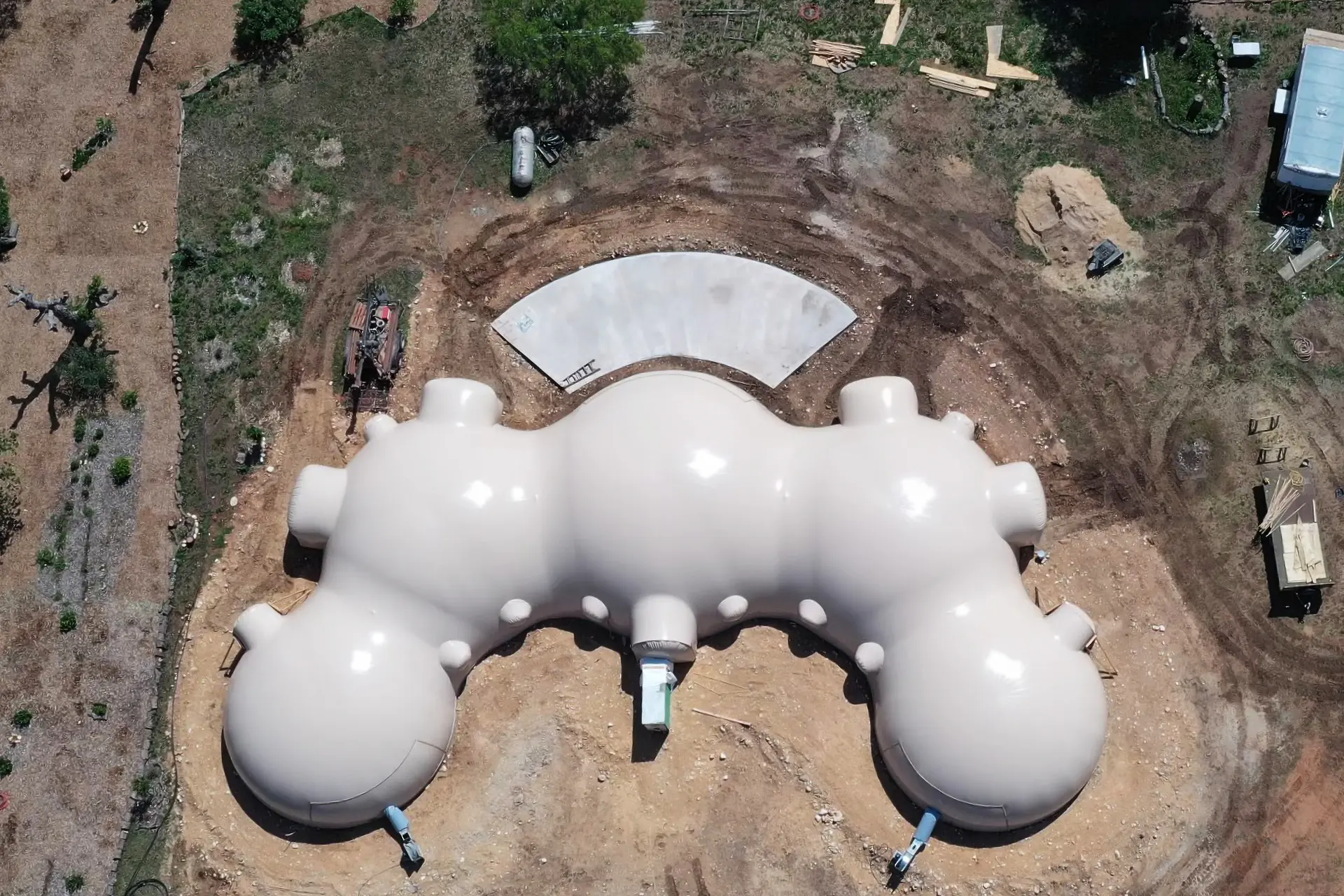Monolithic Commons

Mike South took this image of a complex Airform newly inflated in Fredericksburg, Texas. This is one of the first images we are releasing as Creative Commons.
Mike South / Monolithic Commons / CC BY-SA 4.0
Monolithic Commons is an initiative by the Monolithic Dome Institute to create a Creative Commons (CC) library of sharable media about the Monolithic Dome. The purpose is to make it easier for individuals and organizations to blog, report, and share Monolithic Dome content.
Monolithic Constructors contributes images and video to the Institute’s library and also licenses content on this website as Creative Commons.
What is Creative Commons?
Whenever a photograph is taken or a video is created, the copyright is immediately assigned to the author as All Rights Reserved. This means nobody is supposed to use the content without permission. Of course, it can be difficult and time-consuming to obtain permission.
Creative Commons solves this problem by allowing the author to license media in a standardized way to give permission to share images, videos, and other creative work. Content marked as CC means you can safely use the content as long as you follow a few basic rules outlined by the license.
Most Monolithic Commons content uses the CC BY-SA 4.0 license:
Attribution—You must give appropriate credit, provide a link to the license, and indicate if changes were made. You may do so in any reasonable manner, but not in any way that suggests the licensor endorses you or your use.
ShareAlike—If you remix, transform, or build upon the material, you must distribute your contributions under the same license as the original.
No additional restrictions—You may not apply legal terms or technological measures that legally restrict others from doing anything the license permits.
Typically, it’s best to name the author, cite the source page, and cite the license. If you are publishing online, you should link to the author, the source page, and the license. If you are printing the content, you should give sufficient information for people to find the source via search.
A simple example of how this works is the photograph above. A solid way to cite this image is to say:
“Image by Mike South via Monolithic (CC BY-SA 4.0)”
Note that we linked Mike’s bio, this page because it’s the source of the image, and the license at CreativeCommons.org.
Common Sense
There is another aspect to remember when using Creative Commons content. Never represent the work as your own. Not just the image but also the image content. It should go without saying, but many less reputable websites seem to skip this detail.
There is some confusion about what “ShareAlike” means. Some people fear that if they use an image licensed as ShareAlike, that their blog post, school paper, newspaper report must also be licensed as ShareAlike. They don’t. ShareAlike means that if you use the image as the basis of new content, then the new content must be licensed the same. If we take that picture above and add a smiley face to it and publish that image, you should say where you got the image, that you added a smiley face, and that the new image is also published as CC BY-SA 4.0.
Don’t be afraid to use Creative Commons content. It’s meant to be shared. The simple rules are there to protect both the author and the publisher.